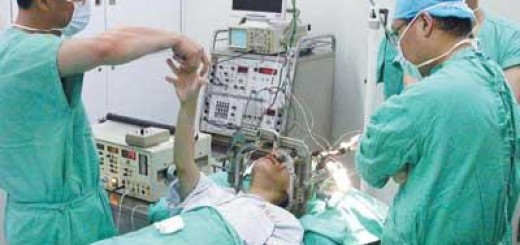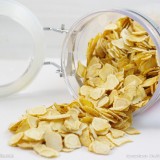炎症是众多疾病的发病基础。炎症可以是由病原菌感染诱发,但也可以是非感染因素引起的。在非感染性炎症中,常见的困扰人类的疾病包括类风湿性关节炎、结肠炎、各类骨关节及软组织(肌腱、韧带)炎症等。
在一项由韩国科研人员进行的研究中,发现人参达玛烷皂苷Rb1及其代谢产物Compound K能够有效地降低巨噬细胞(一种慢性炎症中最常见和最主要的炎症细胞)释放炎症因子(肿瘤坏死因子α和白介素1β及白介素6(IL-6)。因此,人参达玛烷皂苷Rb1可以发展成为一种治疗非感染性炎症的新型药物。
这个研究利用脂多糖(LPS )刺激的小鼠腹腔巨噬细胞,发现人参皂苷Rb1 及其代谢产物compound K抑制了炎症反应中核转录因子κB ( NF-κB )的激活(NF-κB是炎症发生的关键因子),同时也有效抑制肿瘤坏死因子-α,白细胞介素( IL) -1β和IL-6的表达。在2,4,6 – 三硝基苯硫酸(TNBS )诱导的结肠炎小鼠,口服给予人参皂甙Rb1或compound K,能够明显抑制结肠的缩短和增厚,以及改善病理的宏观评分。此外,与人参皂苷Rb1或Compound K对结肠髓过氧化物酶活性的抑制率达到84%和88%。 基于这些发现,人参皂甙Rb1和Compound K可以用于炎性疾病(如结肠炎、类风湿性关节炎)的治疗,
原文发表于:Biochem Pharmacol. 2011 Aug 1;82(3):278-86
Ginsenoside Rb1 and its metabolite compound K inhibit IRAK-1 activation–the key step of inflammation.
Source
Department of Life and Nanopharmaceutical Sciences, Kyung Hee University, Seoul 130-701, Republic of Korea.
Abstract
In the preliminary study, ginsenoside Rb1, a main constituent of the root of Panax ginseng (family Araliaceae), and its metabolite compound K inhibited a key factor of inflammation, nuclear transcription factor κB (NF-κB) activation, in lipopolysaccharide (LPS)-stimulated murine peritoneal macrophages. When ginsenoside Rb1 or compound K were orally administered to 2,4,6-trinitrobenzene sulfuric acid (TNBS)-induced colitic mice, these agents inhibited colon shortening, macroscopic score, and colonic thickening. Furthermore, treatment with ginsenoside Rb1 or compound K at 20mg/kg inhibited colonic myeloperoxidase activity by 84% and 88%, respectively, as compared with TNBS alone (p<0.05), and also potently inhibited the expression of tumor necrosis factor-α, interleukin (IL)-1β and IL-6, but increased the expression of IL-10. Both ginsenoside Rb1 and compound K blocked the TNBS-induced expressions of COX-2 and iNOS and the activation of NF-κB in mice. When ginsenoside Rb1 or compound K was treated in LPS-induced murine peritoneal macrophages, these agents potently inhibited the expression of the proinflammatory cytokines. Ginsenoside Rb1 and compound K also significantly inhibited the activation of interleukin-1 receptor-associated kinase-1 (IRAK-1), IKK-β, NF-κB, and MAP kinases (ERK, JNK, and p-38); however, interaction between LPS and Toll-like receptor-4, IRAK-4 activation and IRAK-2 activation were unaffected. Furthermore, compound K inhibited the production of proinflammatory cytokines more potently than did those of ginsenoside Rb1. On the basis of these findings, ginsenosides, particularly compounds K, could be used to treat inflammatory diseases, such as colitis, by targeting IRAK-1 activation.










































